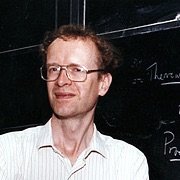Read this tutorial on the creativity cycle. Although something remains mysterious about what occurs during a flash of creative inspiration, there are nonetheless certain procedures that encourage creative thinking. This tutorial outlines a repeatable four-step creative process based on what is known objectively about producing novel ideas and solutions.
No precise procedure guarantees creativity, but the following informal procedure may be useful. Many people have similar working routines. It may look simple, but success does not come from one single application. The same type of procedure repeats again and again, for a long period of time.
Step 1 - Research
A student asked the Nobel laureate John Nash for advice on getting ideas for his thesis, and the reply was, "Have you done your reading?"
When we need to come up with an idea to solve a problem, it would be helpful to do some research to see what other people have thought about the topic. If good solutions we can use already exist, we do not have to waste our time to "reinvent the wheel." But even if the problem has not been solved, we can learn more about existing approaches and discover their limitations. When you begin your research, collect as much information as you can, without worrying too much about their relevance.
Here are some useful things to do:
- Obtain relevant information from the scientific literature or experts.
- Study the history of the problem.
- Do case studies of people who have dealt with similar problems.
- Think about analogous situations.
- Talk to the people who are involved.
Step 2 - Explore the Connections among Ideas
When you are gathering your data, you are conducting a preliminary study to learn more about the problem you have to solve. During the process, and after you have collected a lot of material, you should examine and reflect on what you have, to rank the importance of the different pieces of information you have, and to investigate whether special connections exist between the ideas. Creative minds often apply a good idea from one field to another.
Step 3 - Relax and Wait
Good ideas can suddenly pop into your mind while you are taking a shower, or waking up from a good night's sleep. When you are sorting out the connections among ideas, be persistent and spend some time keeping lots of different ideas in mind. Some will remain in the background and some will enter the unconscious thinking processes. After a period of hard work, we sometimes need to pull back and do something relaxing or different to stimulate the mind. You may allow yourself to forget the less important ideas, so more relevant ones float to the top. Regardless of the the mechanism, it is important to allow time for ideas to percolate. If you still cannot resolve your problem, you may need to do more research to consider further connections.
Step 4 - Apply, Review, and Follow up
Once you have found some ideas that seem to work, you should examine them carefully to check whether they can help you solve your problem. Consider whether you can improve them further and how you will implemented them. Even when ideas have proved to be successful, you should review the whole process to see how you can make them better.

§1. An Example
Andrew Wiles (1953– ), the English mathematician, is famous for proving
Fermat's Last Theorem. During this television interview, Wiles discusses his research routine, a process that echoes what we have reviewed above.
NOVA: On a day-to-day basis, how did you go about constructing your proof?
Wiles: I used to come up to my study, and start trying to find patterns. I tried doing calculations which explain some little piece of mathematics. I tried to fit it in with some previous broad conceptual understanding of some part of mathematics that would clarify the particular problem I was thinking about. Sometimes that would involve going and looking it up in a book to see how it's done there. Sometimes it was a question of modifying things a bit, doing a little extra calculation. And sometimes I realized that nothing that had ever been done before was any use at all. Then I just had to find something completely new; it's a mystery where that comes from.
I carried this problem around in my head basically the whole time. I would wake up with it first thing in the morning, I would be thinking about it all day, and I would be thinking about it when I went to sleep. Without distraction, I would have the same thing going round and round in my mind. The only way I could relax was when I was with my children. Young children simply aren't interested in Fermat. They just want to hear a story and they're not going to let you do anything else.
NOVA: Usually people work in groups and use each other for support. What did you do when you hit a brick wall?
Wiles: When I got stuck and I didn't know what to do next, I would go out for a walk. I'd often walk down by the lake. Walking has a very good effect in that you're in this state of relaxation, but at the same time you're allowing the sub-conscious to work on you. And often if you have one particular thing buzzing in your mind then you don't need anything to write with or any desk. I'd always have a pencil and paper ready and, if I really had an idea, I'd sit down at a bench and I'd start scribbling away.
—Solving Fermat: Andrew Wiles (Nov 2000)
Source: Joe Lau and Jonathan Chan, https://philosophy.hku.hk/think/creativity/cycle.php This work is licensed under a Creative Commons Attribution-NonCommercial-ShareAlike 4.0 License.
This work is licensed under a Creative Commons Attribution-NonCommercial-ShareAlike 4.0 License.